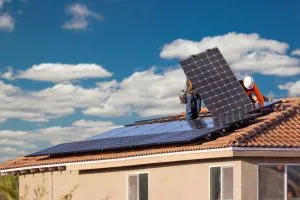Due to the advent of technology and the further development of the solar industry, the prices of solar panels have declined compared to the past. This is good news for many homeowners, so they can afford to switch from conventional electricity to solar energy. After all, there are many advantages to using solar energy for your household.
Solar energy can give you more control over your electricity consumption, increase your home value and even qualify for tax breaks from your local government. It’s also eco-friendly since you’re consuming renewable energy.
However, before investing in any solar product and installation, it’s crucial to understand your solar energy storage options and their benefits. It’s best to research solar battery price, capacity, and installation costs for thermal and mechanical energy storage options to help you make an informed decision.
Consider this guide so you can store solar power successfully in your home.
Thermal Energy Storage
The first storage system you can use for solar energy is thermal energy storage, also known as mechanical storage. While they’re great solutions for storing solar energy, their downside is the requirement for lots of space and materials.
However, comparing their benefits is necessary to assess which storage is the best option for your solar power. Here are some types of thermal or mechanical energy storage that you can do for your home:
Water Tank
When thermal energy is stored, it’s heated or cooled to use later. A water tank for heat storage could heat the water when energy is plentiful and then store it for use later when energy is scarce.
It’s also possible to use thermal energy storage to balance energy consumption during the day and at night. Besides portable water tanks, you can consider configuring a deep underground water tank in your home. However, this requires more parts and configurations for installation.
Compressed Air System
This solar storage system uses a tank to store compressed air. Electricity is generated during peak demand by releasing air. Compressed air storage can enhance air quality, maintain system stability, and supplement energy usage during high demand.
On the other hand, a turbine decompresses the air to recover the energy. Energy savings can be achieved by reusing heat released during expansion.
Flywheel
Surplus electricity is used to spin a flywheel to supply quick energy as needed. Flywheel energy storage converts electrical energy into mechanical power by rotating the flywheel at high speed while storing it.
In addition, flywheels drive generators to produce electricity when necessary. It’s worth noting that flywheels operate in high vacuum conditions.
Molten Salt
Solar power can also be stored in thermal storage tanks by converting the sun’s energy into heat. Some commercial solar plants store excess energy through molten salt

High temperatures can be absorbed without changing the state of the material. There’s an option to create a salt-based solar storage plant that allows you to store some energy storage as a reserve.
Pumped Hydro
In this storage, a reservoir is usually filled with water by pumping it uphill. Electricity is generated when water flows through turbines. In addition to energy balance and stability, pumped storage hydropower can provide grid ancillary services such as frequency control and reserve generation.
Like other hydroelectric plants, pumped storage plants can respond quickly to significant changes in electrical load.
As shown here, these options can help you store energy.
Batteries
Most homeowners store solar energy with a solar battery—the chemical reaction between the components of a battery stores solar energy when pumped into it. As the battery discharges, the reaction reverses, allowing the battery to release current.
A lithium-ion battery converts solar energy into electricity through chemical reactions in which lithium ions move through an electrolyte solution. Moreover, electrons are released as a chemical reaction occurs when electricity is sent from the solar panels to the battery storage system.
Another battery option to use for solar power storage is flow batteries. Since the 1980s, inorganic flow batteries based on metal ions have been used. These older models could deliver more energy hours by simply increasing the amount of vanadium in a storage tank. The ultimate downside for this battery storage is that the vanadium price is, unfortunately, high.
By installing solar batteries, you can gain energy independence and become self-sufficient. Clean energy enthusiasts need these batteries. Many people are turning away from traditional fossil fuels to achieve a sustainable future.
Conclusion
Solar battery storage can be a worthwhile investment for people who live in areas with frequent power outages. With the different options and benefits stated above, you can further assess whether solar power is indeed a valuable investment for your residential property.
Solar batteries and mechanical energy storage have plenty of benefits but are not without costs. Therefore, assess these factors first before deciding to invest in them.

